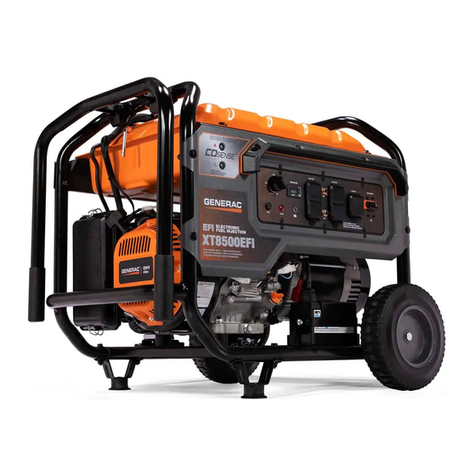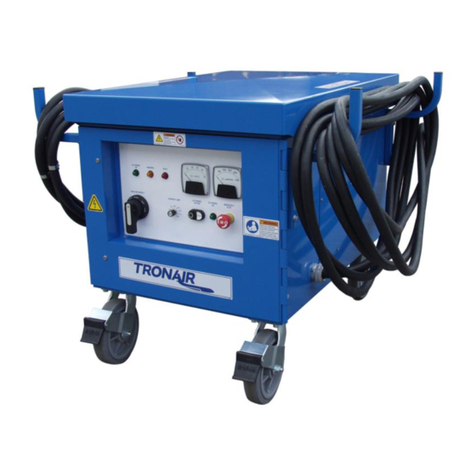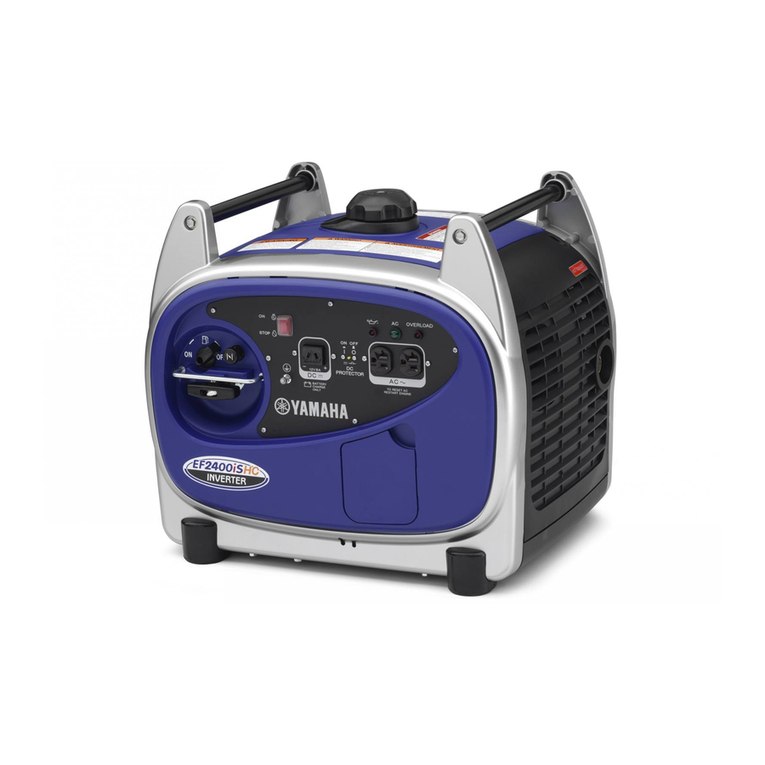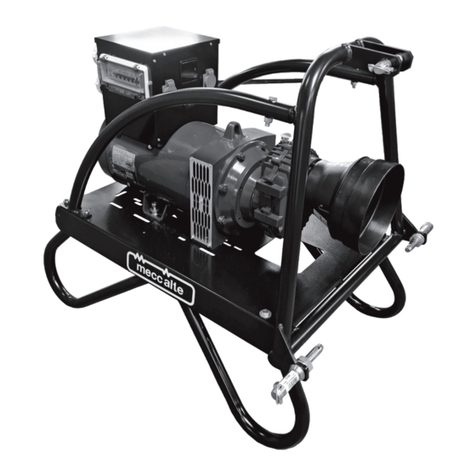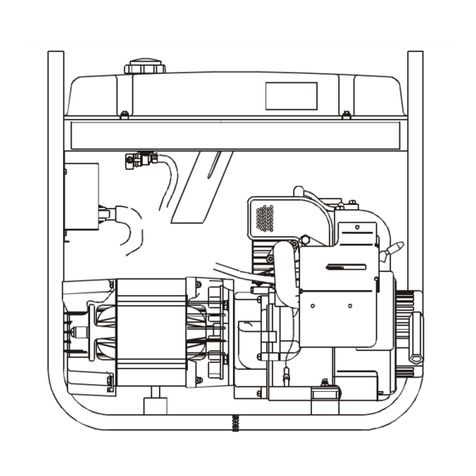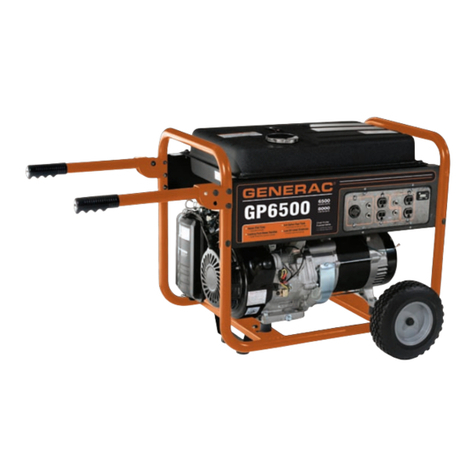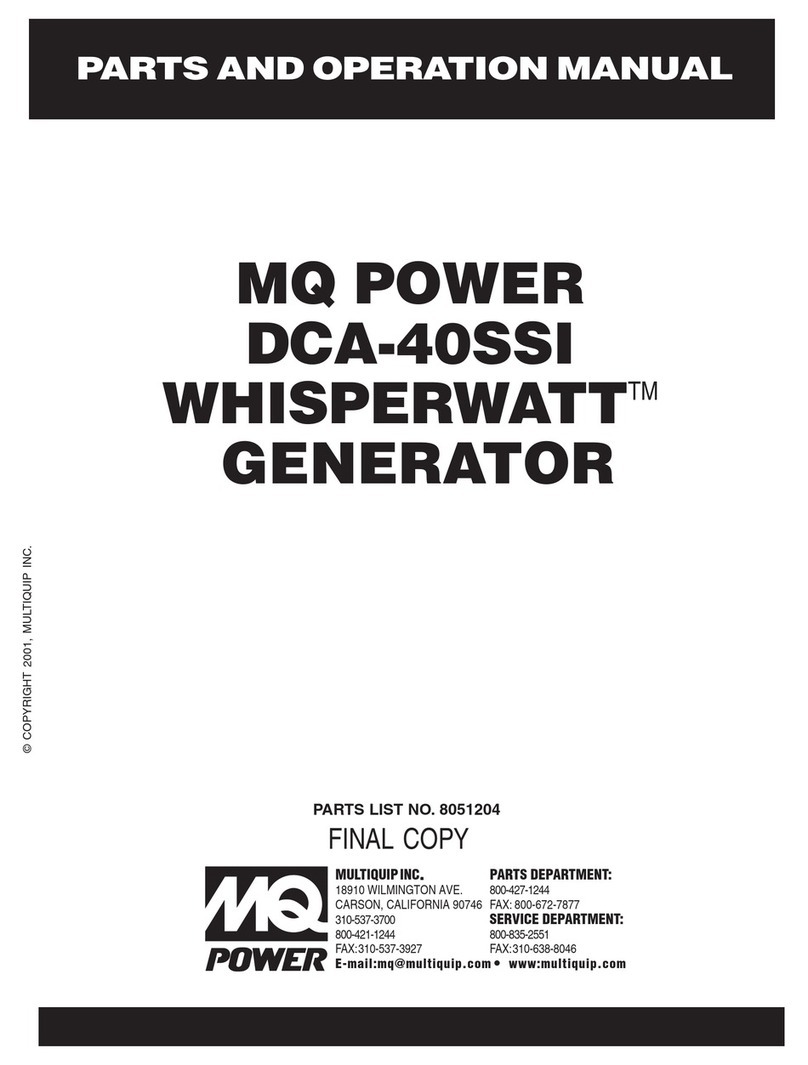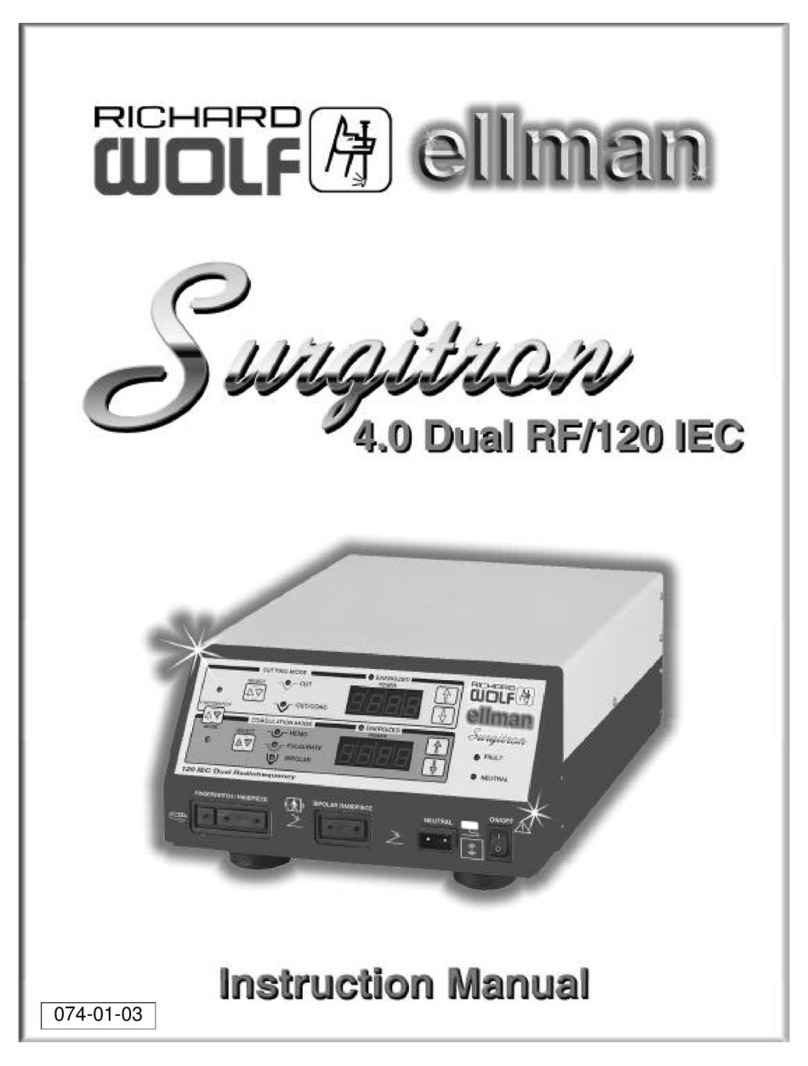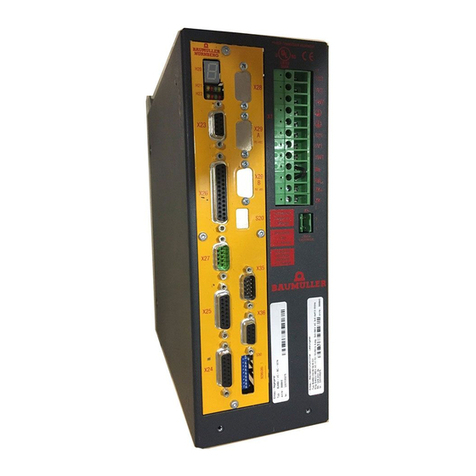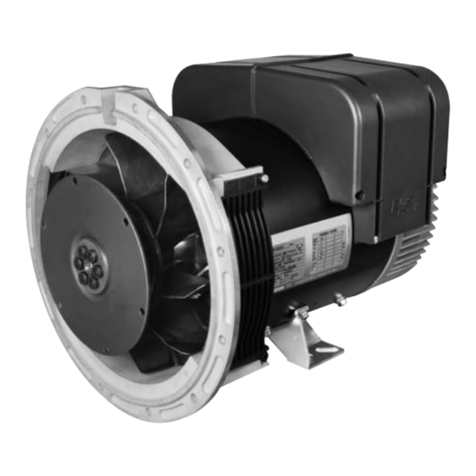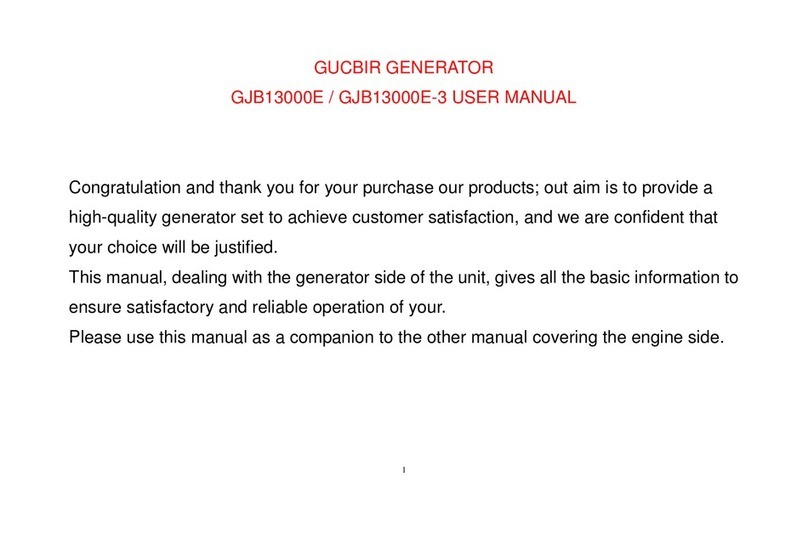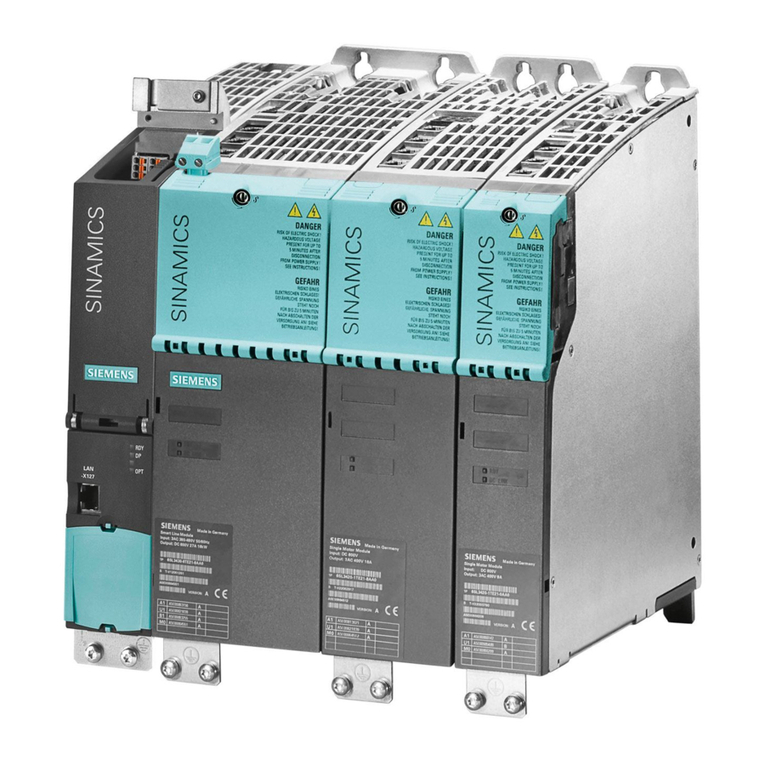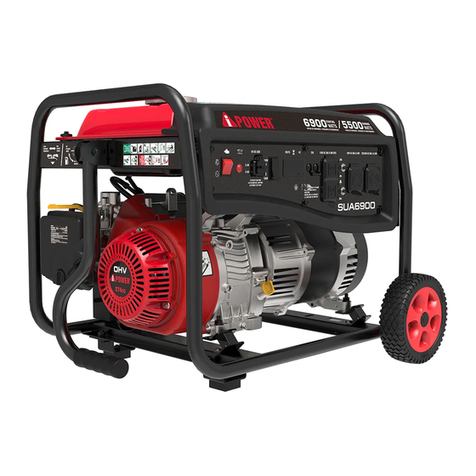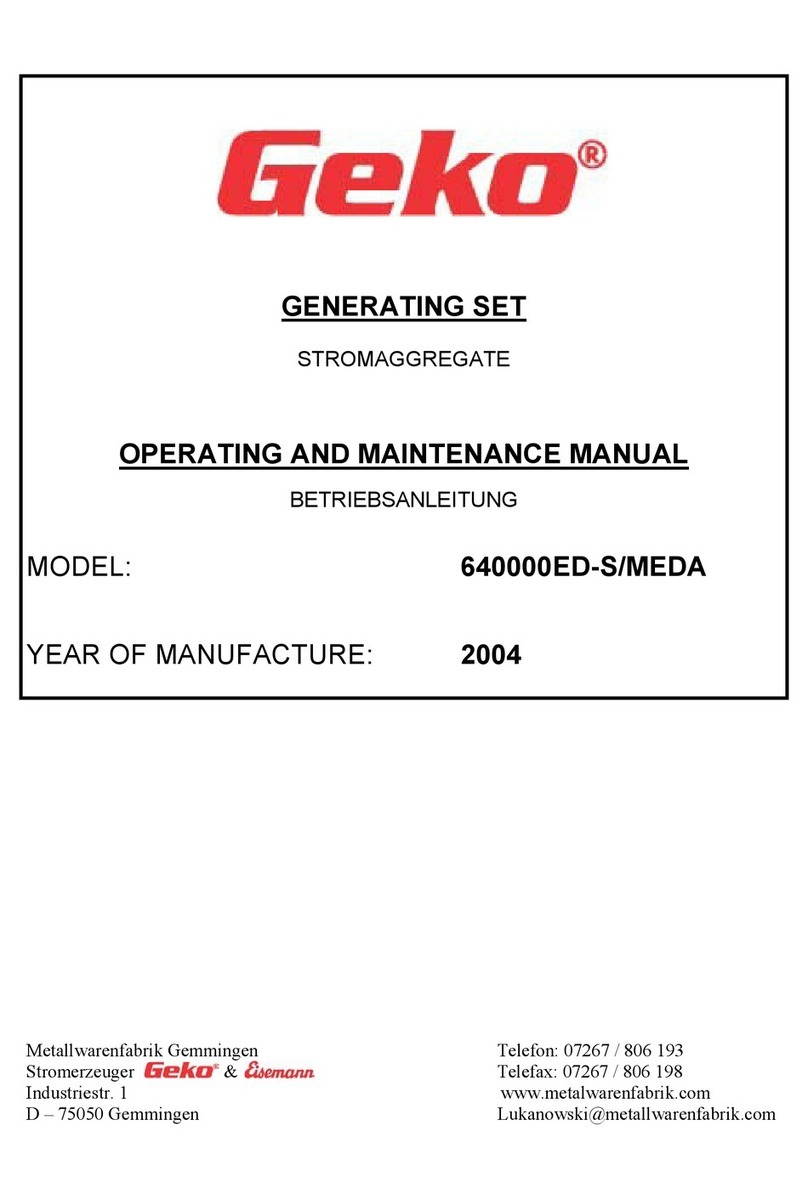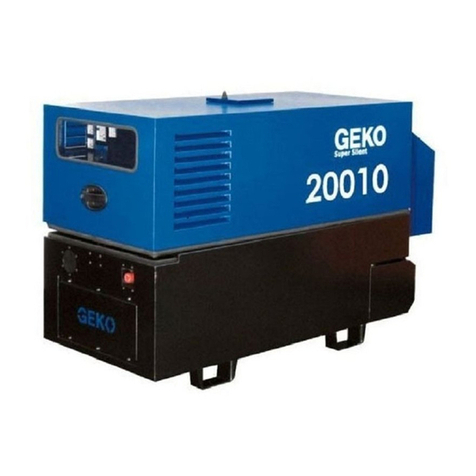16
12.4.5 Operating modes of BLC 100
Warning! Turn on the unit, keeping both on-off switches in the „OFF“ position. After turning on,
wait the end of built-in control BLC (about 10 s). After the light-emitting diode „Netzbetrieb“
(Work from the circuit) has lighted up, a desired operating mode can be chosen by the on-off
switches.
Start of the electric plant in the presence of load
In this operating mode, the electric plant starts immediately with closed
contacts X1.6 and X1.7. After the electric plant is warmed up, load is
connected.
When the switch is turned to the AUS position, the generator is
immediately disconnected.
After 30 s, the engine stops. If contacts X1.6 and X1.7 are not closed,
the electric plant does not start. After the closure of contacts X1.6 and
X1.7, the electric plant starts immediately. After warming up, it accept
load. After the direct-mode switch is opened, the electric plant is imme-
diately disconnected. If contacts X1.6 and X1.7 are opened again, the
generator is disconnected after 5 s.
After 30 s, the engine is turned off
The control of the voltage of a circuit with automatic start
The ATS/Control mode of the circuit is turned on. Light-emitting diode „ATS-
Betrieb“ (ATS mode) blinks. The electric plant is turned on with a delay of 4
s after the disappearance of circuit voltage.
Start of the electric plant in the absence of load and with the control
of circuit voltage
In this mode, the electric plant starts immediately, in the absence of load
(hot-reserve mode). Circuit voltage is monitored, and when it disappears,
the generator contactor connects a consumer to the electric plant after 2 s.
After the direct-mode switch is opened, the electric plant is immediately tur-
ned off.
OFF.
Circuit voltage is not monitored, the electric plant does not start. Warning!
If both switches are in the „OFF“ position, all messages on faults are erased
12.5 Protective circuit breaker (option)
The protective circuit breaker is a switch with an electromagnetic breaker, which is automatically opened when leakage current exceeding rated breaker-triggering current flows on the ground or through the
case. The application of the protective circuit breaker is an additional safety measure against a direct touch. This device is intended to prevent the appearance of both dangerous voltage on open current-
carrying parts of electrical devices and fires. Warning! Before the connection of the electric plant, it is necessary to check its serviceability by the test button of the protective circuit breaker. If the circuit
breaker is not triggered, it is forbidden to use the electric plant. See electrical connection schemes 100118 and 100119.
12.6 Control of insulation resistance in agreement with GW 308 (option)
The control of insulation resistance in combination with the standard protective measure «protective separation» is an additional protective measure in an IT circuit. Since the first short circuit on the case or
defect of insulation is not destructive and consequently remains unnoticed, the insulation control device, which reveals such defects and disconnects consumers, is useful and recommended by GW 308. The
neutral wire (N) and potential-equalization wire (PE) should not be connected with each other. The potential-equalization wire should be connected without breaks between the electric plant and all consu-
mers. The plant can be used without grounding. Before each connection, it is necessary to check the serviceability of the insulation control device by pressing the test button. In this case, a red control lamp
must light up, and the main switch must be opened. The red control lamp „ISO-Fehler“ (Insulation fault) is constantly on before opening the main switch when the insulation of the generator, as well as the
insulation of the consumer, is defective. See electric connection schemes 100110 and 100111.
12.7. Measuring instrument for insulation resistance (A-Isometer) (option)
The insulation resistance control in combination with the standard protective measure «protective separation» is an additional protection measure in an IT circuit. Since the first short circuit on the case or
defect of insulation is not destructive and consequently remain unnoticed, the insulation control device, which reveals such defects and disconnects the circuit, is a useful device with a light indicator accor-
ding to VDE 0100-410. The neutral wire (N) and potential-equalization wire (PE) should not be connected with each other. The potential-equalization wire should be connected without breaks between the
electric plant and all consumers. The plant can be used without grounding. Before each connection, it is necessary to check the serviceability of the insulation control device by pressing the test button. In
this case, a red control lamp must light up. The red control lamp „ISO-Fehler“ (Insulation fault) is constantly on before breaking the supply circuit when the insulation of the generator, as well as the insulation
of the consumer or wiring, is defective. See electric connection schemes 100114 and 100116.




















